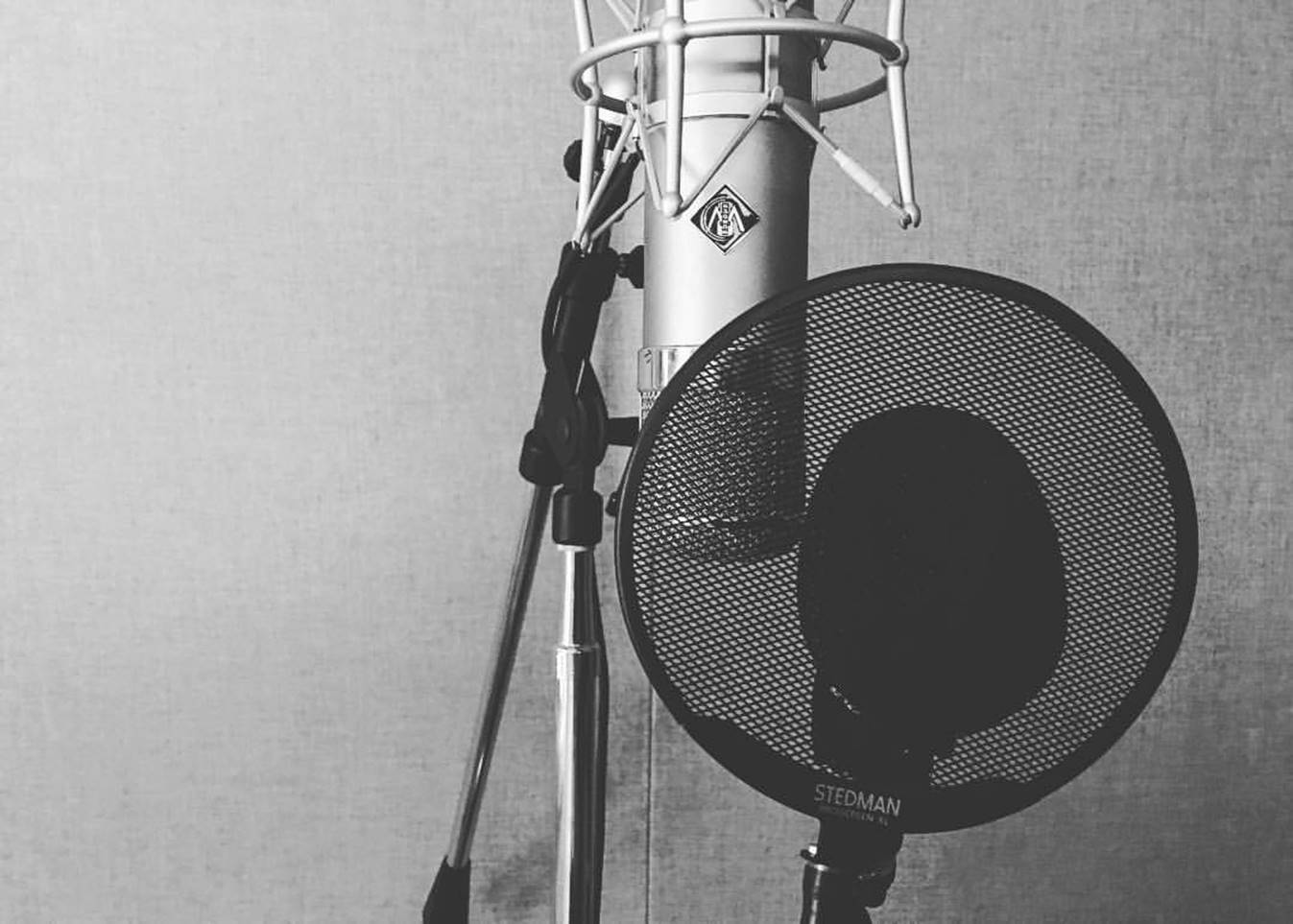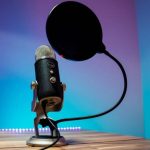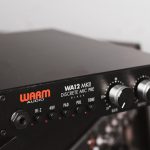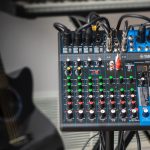A pop filter a simple tool with a simple task…and every good musician needs them.
If you record vocals, you would have most likely noticed ‘p’ and ‘s’ sounds being recorded on the microphone while editing your vocal tracks.
These are known as ‘plosives’ sounds, and are caused when singing words starting with ‘p’ and ‘b’ which creates a popping sound due to gushes of air from the mouth hitting the microphone ribbon.
To filter out these plosive sounds from your recording, we use a pop filter.
What is a pop filter?
A pop filter is essentially a layer of nylon or metal mesh material that acts as a shield in between your mouth and the microphone.
Pop filters work by filtering out plosive sounds on the microphone and keep your microphone in good condition by preventing droplets of saliva from reaching the internal mic ribbon.
It’s industry standard to use a pop filter when recording songs through your microphone for a cleaner sound, and there are some good budget options as well.
The Best Pop Filters
Not all pop filters are made equal. Here are some of the best pop filters that we have come across that can improve the quality of your audio recordings, and provide an effective shield against plosive sounds.
1. Auphonix Pop Filter
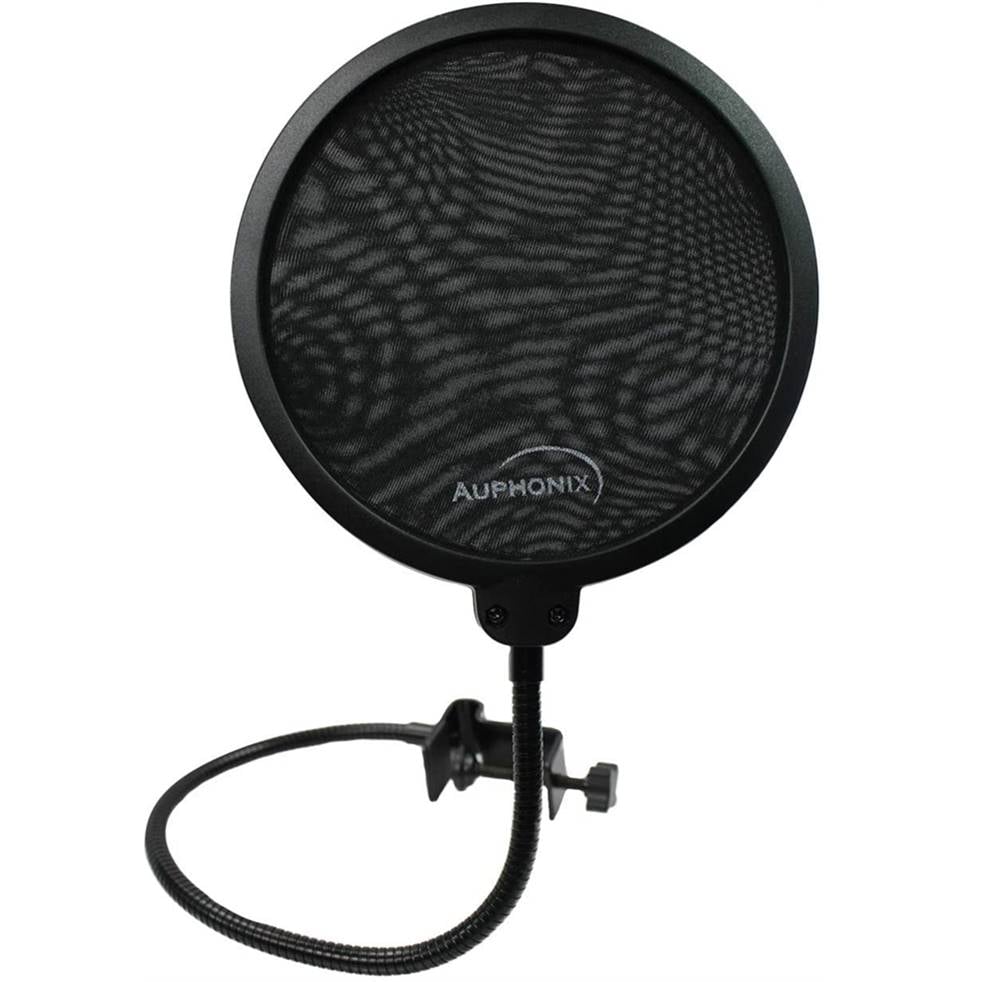
When it comes to pop filters, the Auphonix is one of the best budget options out there.
And that’s because this pop filter is so damn cheap, and gets the job done.
It features a dual-layer mesh screen which helps to filter out plosive sounds while maintaining the quality of your voice.
The pop filter also comes with an adjustable Gooseneck which is mounted on a flexible and fully rotatable arm, allowing you to adjust the pop filter positions around your microphone.
The adjustable clasp on the pop filter can fit on surface up to 1.75”, and connects directly to the microphone stand or boom arm.
Overall it’s a decent pop filter you can find on a budget to block out hisses, pops or thud sounds from the mic.
Check them out here:
Up next…
2. Nady MPF-6 Pop Filter
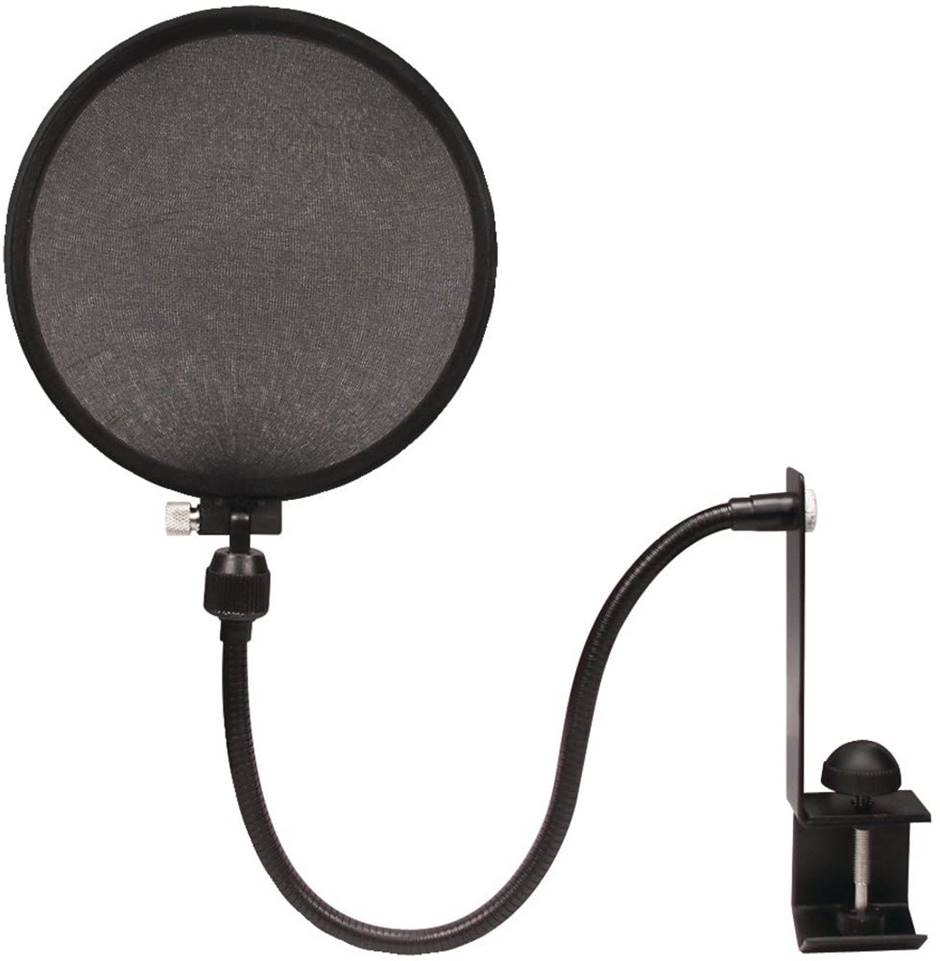
Still the classic favorite among musicians, the Nady MPF-6 is a good option for those looking for a budget pop filter.
While it is a single layer-only pop filter, it can eliminate popping sounds on the microphone by reducing the impact of fast moving air on the microphone during singing sessions. It also helps to prevent accumulation of saliva on the microphone element.
The MPF-6 also comes with a boom/mic stand clamp with an elongated metal bracket. There’s also a flexible goose-neck holder and swivel mount for easy positioning, and is equipped with a metal stabilizing arm.
While it isn’t the best pop filter out there, it works for home recordists on a budget and still remains a popular classic to this day.
Check them out here:
Up next…
3. Dragonpad USA Microphone Pop Filter
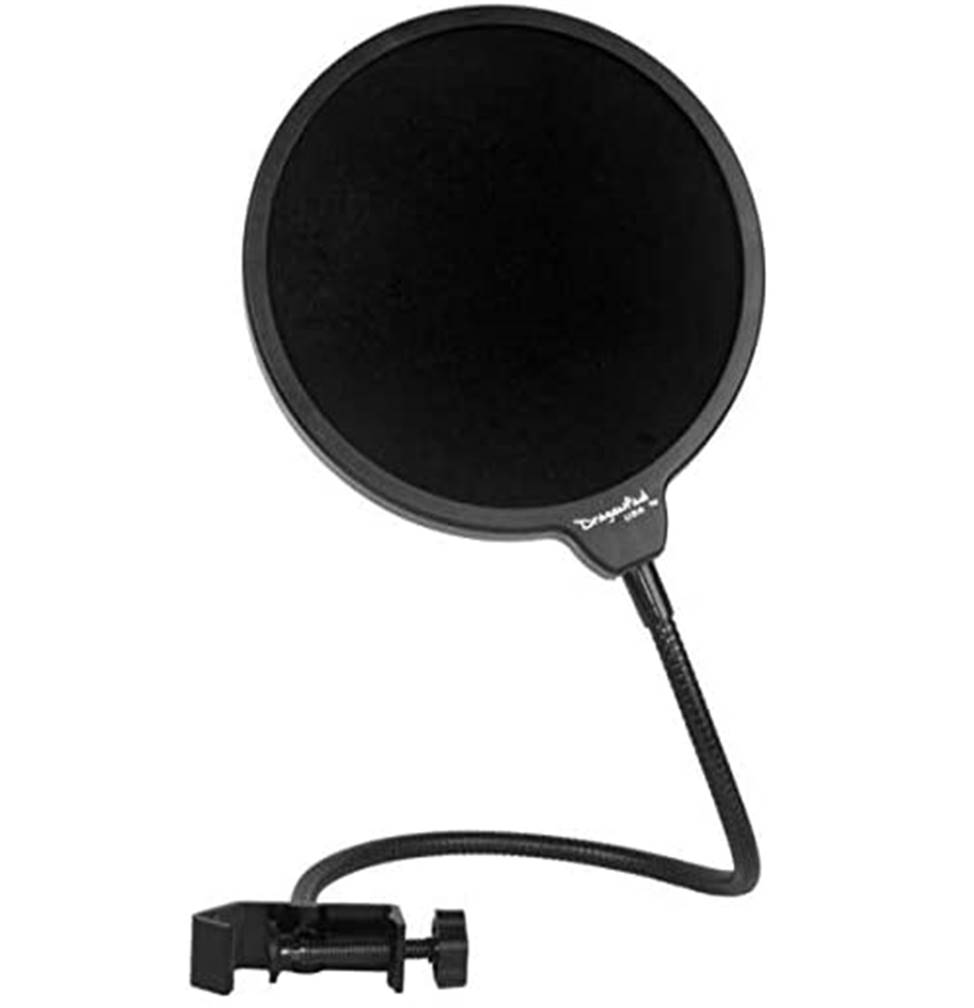
Another great budget option is the Dragonpad USA pop filter…
Like the Auphonix, it’s designed as a dual layer mesh pop filter with an air gap to reduce and eliminate popping and lisping noises from your recordings.
Although some musicians might think dual layer pop filters might diminish the upper frequencies, the users of the Dragonpad seem rather happy with the results.
Furthermore, the pop filter also features a bracket angle and tension screw so that you can mount it to virtually any microphone stand. The metallic gooseneck is firm and stays exactly where you put it, and won’t move around during recording sessions.
If you are looking for a good alternative to the Auphonix, check them out here:
Up next…
4. Stedman Proscreen XL Pop Filter
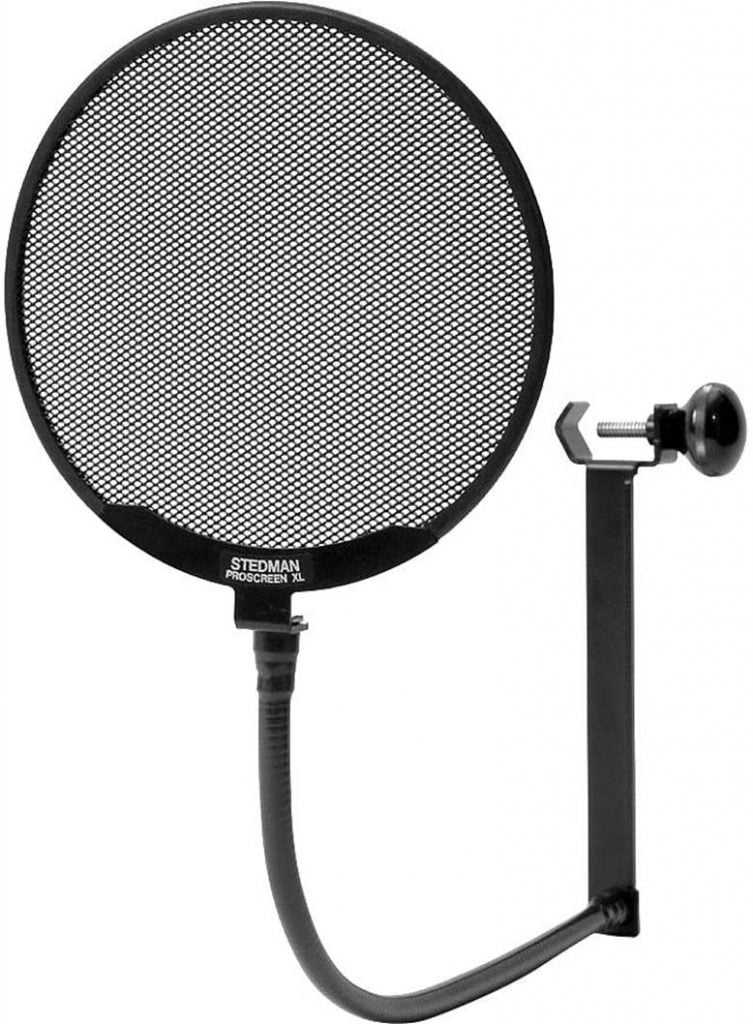
If you aren’t a Stedman fan, you might be wondering why you should pay so much for a pop filter.
The truth is that the Stedman isn’t an ordinary pop filter made from nylon or wire mesh. It has patented fabric filters that effectively eliminates popping sounds which allowing passage of high frequencies to maintain the detail in vocal recordings.
The Proscreen XL has large louvered openings in the filter that allows sound to pass through while diverting air bursts from vocal pops downwards and out of the back of the screen.
The material is also easily washable, allowing it to be used for multiple recording sessions without degradation.
In particular, the Proscreen XL has a large 6” diameter screen with rubber bezel and a 13” flexible gooseneck with an adjustable clamp for easy adjustment and placement.
If you aren’t satisfied with a budget pop filter and want a more effective option, this is a solid choice.
Check them out here:
Up next…
5. Shure PS-6 Pop Filter
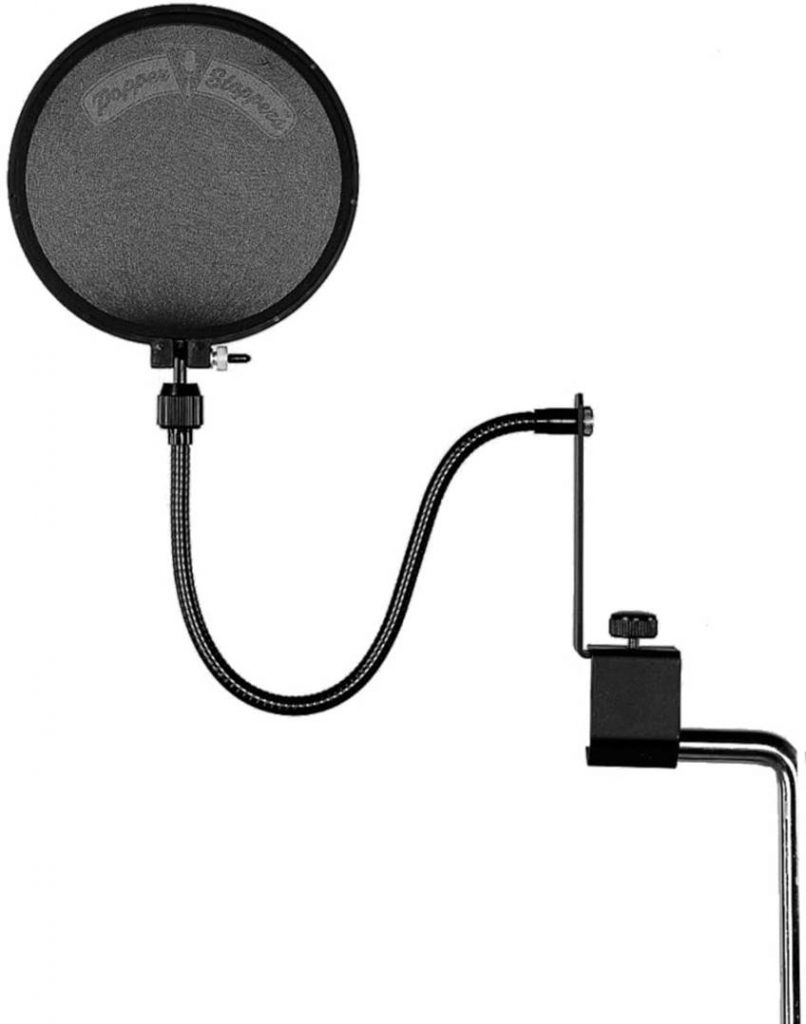
If a dual layer pop filter isn’t enough, the Shure PS-6 comes with four layers!
While this might seem overkill, the PS-6 is undoubtedly one of the most effective pop filters that can block out the audible ‘P’ and ‘B’ pops.
It has a durable four-layer screen with a 6 inch diameter, and comes with a fully adjustable 14” gooseneck and mic stand clamp for flexibility.
It’s a pop filter designed to last a long time, and it delivers. They are also compatible with all Shure microphones.
If using the Stedman Proscreen XL and other pop filters doesn’t help to get rid of the plosive sounds, you can be rest assured that the Shure PS-6 pop filter will.
Check them out here:
Up next…
6. Blue The Pop
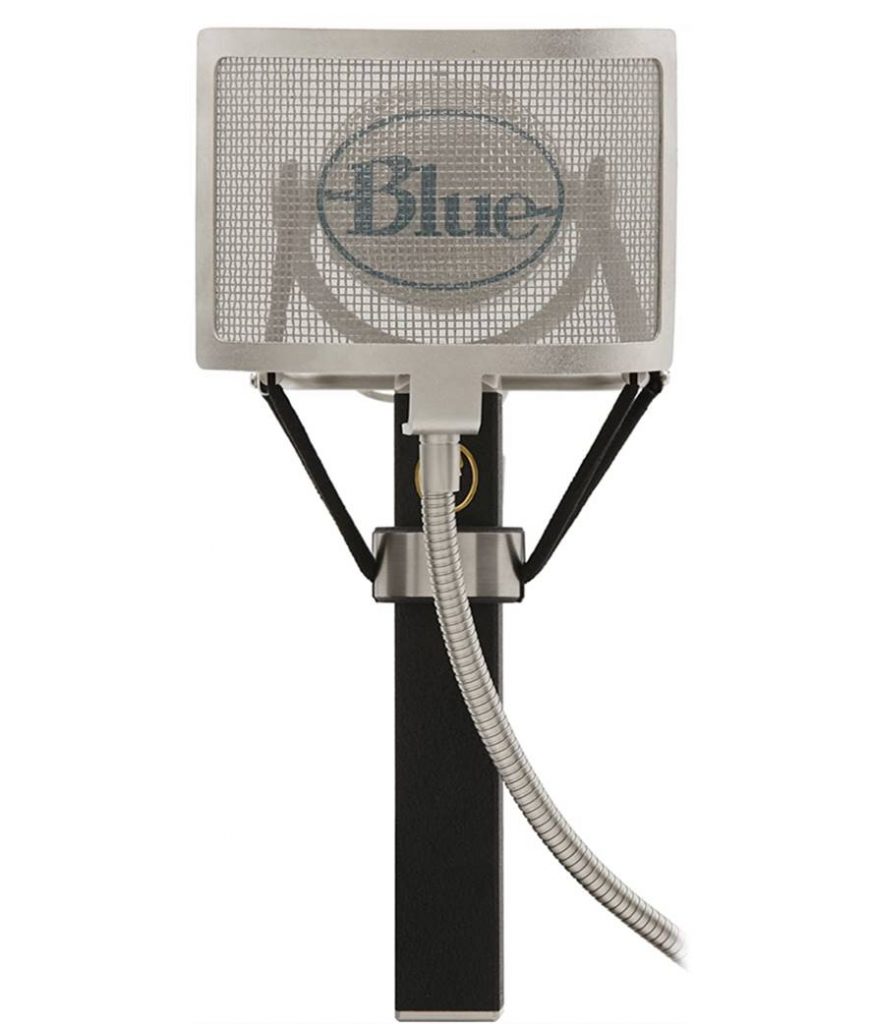
If you are looking for that pop filter with an old-school vintage vibe, the Blue The Pop is a great choice.
The entire pop filter is made out of sturdy metal and the windscreen area gives a cool metallic vintage vibe. The pop filter stays in its position and the metal gooseneck works nicely.
Compared with other pop filters, this one does the job of prevent sibilants and other sudden bursts of air pressure on the mic.
This pop filter comes with a universal windscreen design that eliminates popping sounds from fast moving air. The entire windscreen is made from sturdy wire mesh for enhanced durability.
It also comes with a clamp for you to attach it to the mic stand for easy positioning.
Check them out here:
Up next…
7. Avantone PS-1 Pro Shield
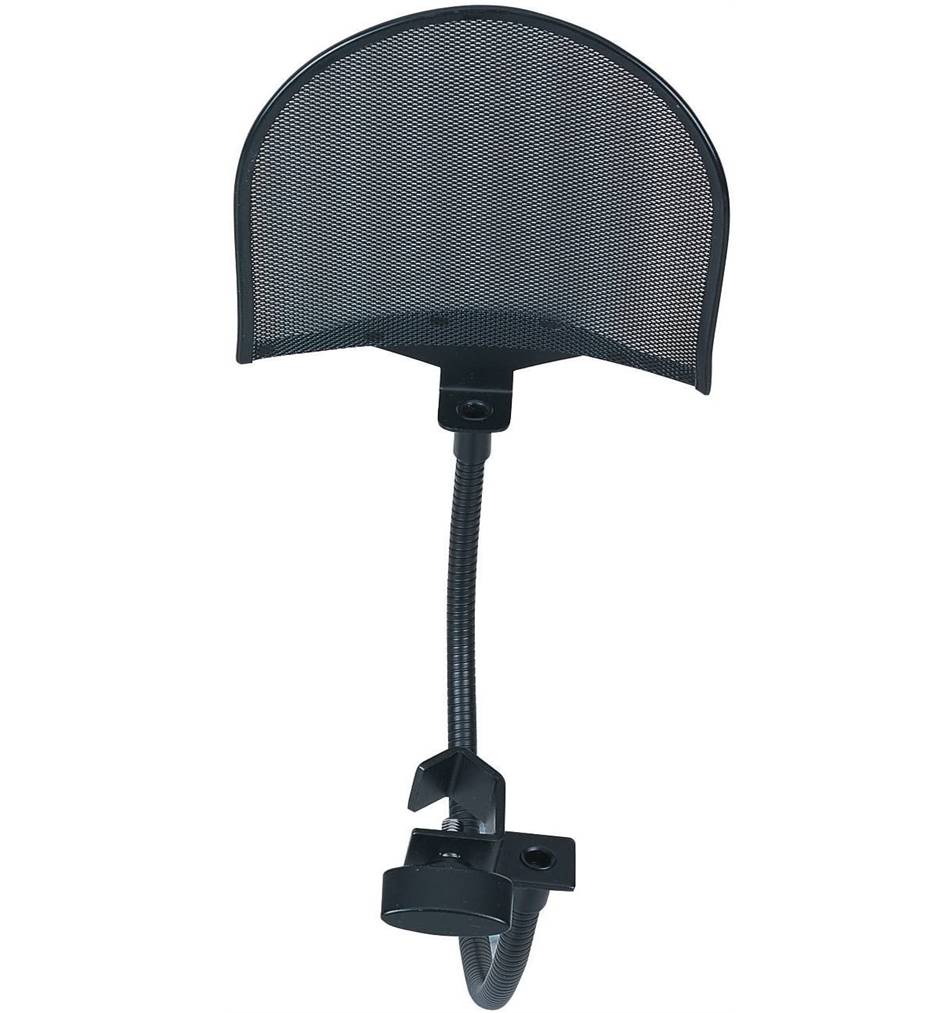
Now if you are looking for some serious sound filtering, the Avantone Pro Shield is definitely one the better pop filters that are compatible with higher-end mics.
It has a specially designed curved surface and grill which is shaped in such a way that “hugs” the microphone like it was custom made for it.
This unique design allows you to capture a more intimate and full sound without overloading the mic capsule with plosive blasts of air.
The Pro Shield is constructed with an acoustically transparent metal screen that allows high-frequency details to pass through while blocking out plosive gushes of air. It also effectively shields your microphone for saliva droplets.
I like the vintage feel of the Pro-Shield pop filter. It works with vintage mics such as the Neumann U-47 as well as the MXL VO 1-A mics.
Check them out here:
Up next…
8. Aston SwiftShield Pop Filter

For most musicians, this would be overkill…
If you want to give your microphone the royal treatment, the Aston SwiftShield pop filter + shockmount combo is probably the one for you.
This pop filter comes with a universal mic mount which fits microphones from 40mm to 60mm in diameter, and provides good mechanical isolation with its own proprietary suspension technology. It has 2 quick release clips which are designed to accommodate your mic.
Apart from the shockmount, the Aston SwiftShield features a stainless steel pop filter with ‘hex Tech’ filter holes that eliminate plosive sounds.
The Shield pop filter itself features a solid stainless steel shield with filter holes which give crystal clear vocals and filter out plosive sounds. The shield has a large surface area and curves naturally around the mic, giving you more flexible manoeuvrability options.
While the Aston SwiftShield is definitely not for everyone, it’s a great choice for professional musicians who want an effective shockmount and pop filter combination in one package.
Check them out here:
With all that said, you might be wondering…
Should you DIY a pop filter?
Short answer: no.
A pop filter is a relatively inexpensive tool that can really improve the sound quality of your recordings.
They make your recordings feel cleaner, easier to edit, and much more pleasing to the ears without plosive sounds.
Many people like to DIY their own pop filter by using some kind of nylon material. While this is possible, I would just recommend buying a pop filter as there are many inexpensive ones on the market – the Nady MPF-6 is a great budget option.
I recommend getting a commercial grade pop filter so that you can get an idea of what an effective pop filter feels like – before you DIY your own.
How to attach a pop filter to a mic
A pop filter usually comes with a flexible gooseneck-clip arm which you can use to attach to a microphone stand. It also comes with a clamp which fits on to microphone arms.
Not all pop filters are the same though – some are made especially for certain microphones such as Blue Yeti or Wave mics.
Windscreen-type pop filters are made for outdoor concert use and are designed to ‘wrap’ around the microphone.
That said, they shouldn’t be used to home recording studios due to the fact that they can cause your song to sound less detailed – a normal pop filter would suffice.
Next Steps
For all the essential gear on setting up your home recording studio, check out this post:
